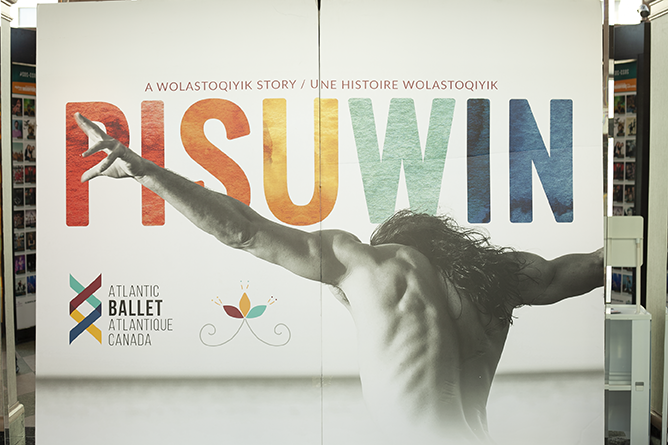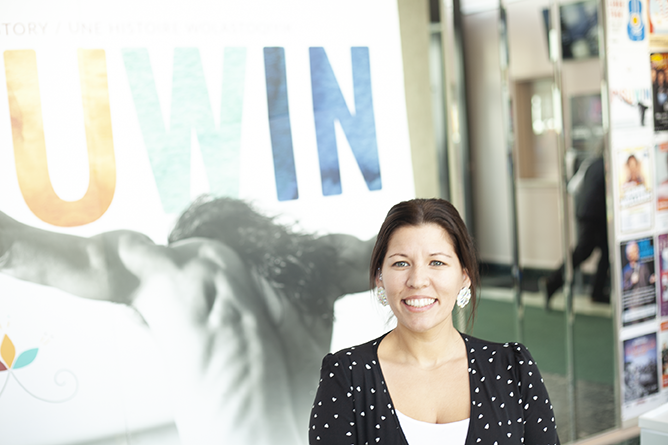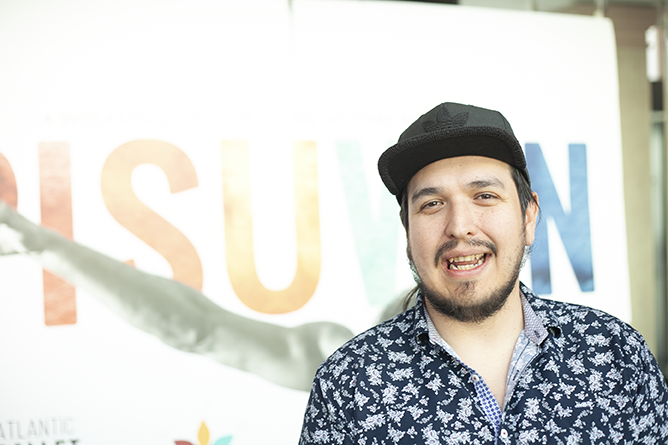
“Dream big!”
It’s a phrase often easier said than done; And it’s harder still to turn those dreams into reality.
But dreaming big and learning how to make those dreams a reality are exactly what Nipahtuwet Naka Wespahtuwet Possesom—aka Possesom Paul, director of Indigenous Programing at the Atlantic Ballet— wants to impart to Indigenous kids who grew up just like him.
Paul’s Indigenous-themed ballet, Pisuwin, returned to the Fredericton Playhouse on Nov. 1 for a select performance for district students. The play opened earlier this year.
“I was just a kid from my rez going to school here in our community in ASD-W, and I dreamed something big and we were able to make it,” said Paul, who grew up on St. Mary’s First Nation and attended several district schools.

Pisuwin, which Paul co-created with Atlantic Ballet Choreographer Igor Dobrovolskiy, uses various local Indigenous legends to tell the story of a greedy monster who drank all the water in the Wolastoq, and a hero who must retrieve the river’s water on behalf of the community. The story addresses greed, generosity and the importance of sharing resources with our communities.
Paul wants kids from his community to see someone from the same community successfully following their dreams.
“We’ve been to Nova Scotia, we’ve been to PEI, we went all the way across Newfoundland,” he told students during an intermission where he and Dobrovolskiy held a question-and-answer session with students. “So, we’re happy to bring it back home because this is where it came from.”
Dobrovolskiy and Paul helped bring Pisuwin to life via a team from the Moncton’s Atlantic Ballet that included several Indigenous specialists in key roles. Music and soundscape design came from Juno- and Polaris-award-winning composer Jeremy Dutcher, of Tobique First Nation, and Dawson Sacobie, of St. Mary’s First Nation, respectively. Emma Hassencahl-Perley, of Tobique First Nation, was the costume designer, while Oakley Rain Wysote Gray, of Listuguj Mi’gmaq First Nation, handled costume production and beading. And the ballet’s lead dancer, Jera Wolfe, is Métis from Toronto.
“I recognized the Jeremy Dutcher songs,” said Sadie Levi, a Hubbard Elementary School Grade 5 student. “I was amazed at how flexible the water [character] was.”
Sarah Aitken, a Grade 9 student at Leo Hayes High school, was initially captivated by the bright colours in the characters’ costumes and the music: “I didn’t know anything about the play before I went but my two elementary schools in Oromocto taught me a lot about the culture of the Wolastoqiyik people and I knew the words to some of the songs,” she said.

During the question-and-answer session with the play co-creators, many students in attendance were able to respond to questions featuring Wolastoqiyik words, an indicator of the importance the district places on teaching Wolastoqiyik culture and language.
“Those are words they would learn at home, words they would hear within the community and words they would hear at school,” said Sarah Francis, ASD-W Director of First Nations Culture & Programs. “[Knowledge of] the language is getting bigger and that’s exciting because more people are feeling more confident in using that.”
Said Francis, “It’s a Wolastoqiyik Ballet, it’s a Wolastoqiyik story and we couldn’t think of a better thing to do for the district, for our First Nations youth. Now they’re going to go back and talk about their favourite characters, they’re going to talk about their favourite parts. I’m excited to hear what the conversations are afterwards and I’m excited to work with Richard [Champagne], my lead, to create some lesson planning around this show to keep the conversations going.”
Paul is adamant about teaching kids—especially Indigenous kids—how to turn their dreams into reality.
“I wanted to see them have the capacity to go further,” he said. “I’m so happy they came to the ballet. The big thing is to dream.”

